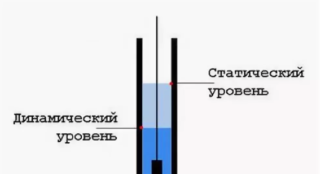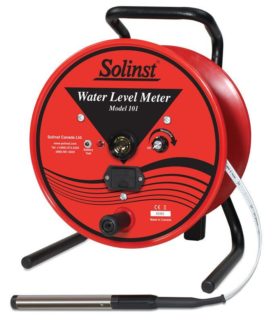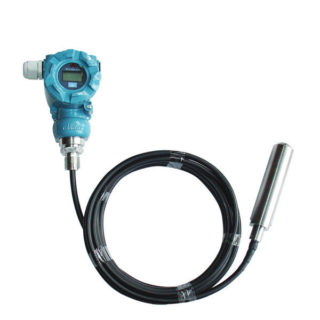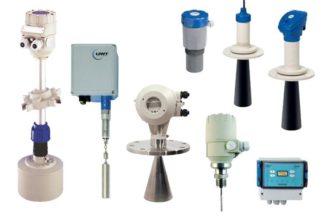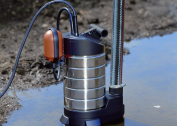For autonomous water supply in a private house, a well is usually chosen. The quality of the fluid obtained from it is much better than when the fence comes from an open reservoir or well. When creating and operating a hydraulic structure, it is important to control the static and dynamic water level in the well.
Static and dynamic concepts
The static indicator is equal to the distance from the earth's surface to the level at which the water mirror is located in the deep well at rest, that is, when the pressure equipment is not working. Knowledge of this indicator allows us to estimate the stock of underground sources. The characteristic is influenced by the pressure inside the reservoir, and not the section of the artesian hydraulic structure shaft or its depth.
The value is variable, it depends on such factors:
- heavy rainfall;
- number of water consumers
- intensive pumping of water.
Measurement is carried out no later than an hour after the unrest in the well calmed down, for example, the pump was turned off. Also, do not take measurements after heavy rainfall, so as not to get incorrect information. In surface and sand water intakes, the indicator usually coincides with the level of subsoil water.
The dynamic level depends on the static characteristic, with the help of which the depth of immersion of the well pump is determined. It is measured when the pressure equipment is turned on from the earth's surface to the water mirror. So that the pump unit does not have dry running, it must be installed below a certain mark with a small margin.
For each pump, the dynamic indicator is different, it depends on how efficient the pump is. Also the casing cross section affects the value. The larger it is, the slower the level will drop.
The pumping device in relation to the bottom of the shaft should be located at a distance of not less than a meter. The minimum dynamic level for the intake and pump from the second pumping will be the sum of this value and the height of the apparatus. When the distance from the pumping device to the bottom is less than half a meter, the device will capture sedimentary sludge and sand, which will affect its useful life and water purity. The liquid column above the pressure equipment should also be at least half a meter to reduce the risk of dry running.
When measuring, it must be taken into account that during a period of intensive water consumption, the water column in the borehole is lowered. At the same time, fluid flows from the aquifer into the hydraulic installation. In order for the values to be correct, it is necessary to wait about an hour with the pumping equipment running before measuring.
Water column and well flow rate
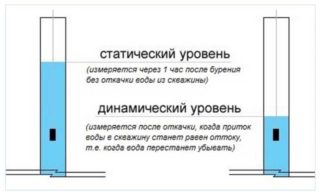 Verification of level values is carried out a day after drilling a hydraulic structure and enter data into the installation passport. Indicators are needed in order to determine the flow rate of a well. It shows how much water a source can produce for a certain time period, for example, 10 cubic meters per day, or 3 cubic meters per hour.
Verification of level values is carried out a day after drilling a hydraulic structure and enter data into the installation passport. Indicators are needed in order to determine the flow rate of a well. It shows how much water a source can produce for a certain time period, for example, 10 cubic meters per day, or 3 cubic meters per hour.
The smaller the difference between the level marks during the pumping process, the greater the flow rate when using pressure equipment.
Knowing the data of the levels and the performance of the pressure head device, the debit value is easy to calculate. If we look at an example, then a pump that can raise a cube of fluid per hour gives an inter-level difference of five meters.If the water column is a little more than 15 meters, then the actual flow rate will be equal to three cubic meters per hour or 200 liters per meter. Since it is not recommended to reduce the dynamic level by less than two-thirds of the total height of the water column, the production rate will be about two cubic meters per hour.
If fluid is not pumped out, the debit value will always be zero. This is due to the fact that the bottomhole pressure in the barrel is equal to the reservoir pressure. When such conditions are achieved, the flow of fluid into the mine stops.
To control the height of the water column in the source of water intake and turn off the pressure equipment electric motor, if the indicator drops to a critical level, it is recommended to install a water level sensor, which will allow to avoid dry running.
How to determine the water level in the well
The first measurements are carried out after the arrangement of the hydraulic structure and the installation of pressure equipment. But subsequently, additional measurements are made to control the borehole flow rate. It is recommended to check the level indicators during increased water intake and in the absence of precipitation for at least a few days when the fluid in the well installation is at a minimum. This is usually observed in the summer season, when a lot of water goes to water the plantings.
They recognize level indicators in different ways, depending on the measuring device, called a level gauge or USK.
More often, simple cable models and electrical level meters are used to measure the water level in wells. If the hydraulic structure is not deep, you can use the device, assembled independently.
The simplest are cable level gauges. Structurally, they are a coil with a wound measuring cable. The principle of the level gauge is this: they lower it into the shaft to the water mirror, then the necessary level is determined by the marks on the cable. But there are devices with a more complex design.
Lot Meters
Structurally, they look like a winch, but at the end of the cable there is a clapperboard. As soon as this element comes into contact with the surface of the water, cotton will sound, which is a signal for measuring.
By design, lot meters are simple, but they do not require a power source. But when performing accurate measurements, extraneous sounds interfere, especially if the water in the mine is at great depths. The optimal location of the water mirror for measurements with the lot apparatus is up to one hundred meters from the ground level.
Contact devices
Such devices require a power connection. To ensure the supply of electricity, the contact is connected to the pipe, which is a conductor, by means of a cord and a clamp.
They use electric levels like this:
- The device is held by the handle and the brake lever is engaged.
- The electrode with the load is lowered into the well shaft.
- When it comes into contact with water, a characteristic sound is heard, and an indicator lamp flashes on the coil.
- On the marking applied to the cable, readings are taken.
Special hooks are installed on the device coil so that it can be fixed at the top of the casing. This protects the cable from possible damage.
If a thermometer is installed on the electrical contact device, it can detect not only level values, but also water temperature. The coil is equipped with a display where temperature indicators are displayed.
Wave meters
When establishing the water level in the well, a sound wave is used. The wave meter creates it with a pneumatic shot from a pneumatic cracker. Further, the time of sound propagation from the wellhead to the surface of the water is recorded. To do this, use a device that recalculates time into distance.
Pneumatic firing allows you to keep high pressure in the annulus, which reduces the error in determining the level indicators.
Ultrasonic devices
The most expensive instruments among meters. To receive data, the sonar is connected to a computer device. Devices of this type are not immersed in the mine, they work as follows:
- An ultrasonic sensor is located on the wellhead.
- He sends signals down.
- Data is displayed.
The use of an ultrasonic level gauge is allowed only after training. In addition to detecting the water level, the device can be used to find damage to the pipe and establish the degree of complexity.
The easiest way is if the hydraulic device was created by professionals. Specialists involved in punching well shafts issue a passport to the well, where they indicate the result of calculating the levels and flow rate. In addition to these indications, the document contains data on the dimensions and material of the casing pipes and tips on the use of suitable pressure equipment.
In the absence of a passport, measurements will have to be carried out independently. In this case, it is necessary to purchase a pressure device with a capacity four times lower than the flow rate.
